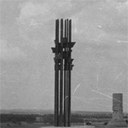0123 A Place of Memory – Monument – Counter-Monument
Artistic strategies of commemoration in Krakow's district of Podgórze
Identifiers (Article)
Identifiers (Files)
Abstract
In recent years, Krakow's district of Podgórze has witnessed the erection of several works in public space that are concerned with the memory of the place. A monumental piece erected by Witold Cęckiewicz in the 1960s in the former Płaszów Concentration Camp has been joined by contemporary works. It is especially the Ghetto Heroes Square and its direct vicinity that have been addressed by artists and designers who, through their works, i.e. Mateusz Okoński's Purification, Łukasz Skąpski's 10 cubic metres of Krakow's wintertime air, and a structure in the form of multiple chairs by Lewicki and Łatak's studio entered into a dialogue with the paradigm of counter-monumentality and postmemory. For common viewers and casual passers-by, as well as for residents of the district, these works are hardly evocative of recent history, or the events they are meant to commemorate. Do these works, with their consciously taken position on the verge of the visible, that is, on the verge of what can be considered art, fulfil their commemorative role? Can the excess of the invisible change at some point into the visible? These questions offer a starting point not only for the discussion of the above-mentioned works in the context of analogous creations in contemporary art of the last two decades, but also for a wider discussion of monumental and counter-monumental art after the Shoah.
Statistics


License

This work is licensed under a Creative Commons Attribution-NonCommercial-NoDerivatives 4.0 International License.



